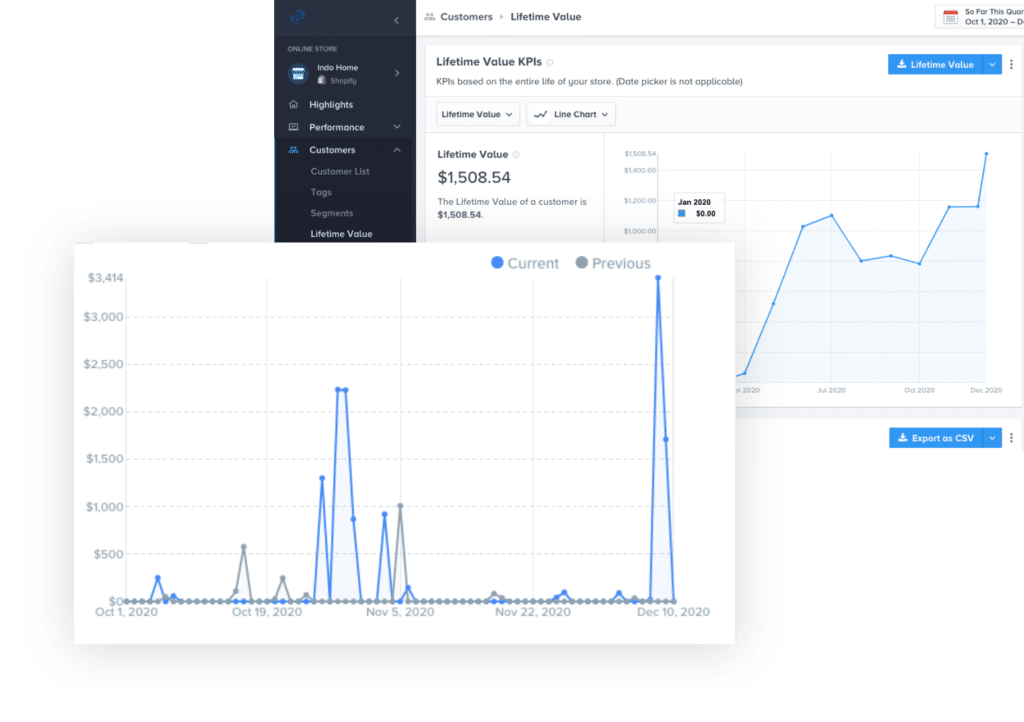Inventory management is essential for most business owners—even more so if you’re juggling multiple sales channels (and perhaps a brick-and-mortar store on top of that)!
Attempting to juggle all of these variables manually is a recipe for error. Not to mention time-consuming. But what if we told you that you and your team could be using that time for more important pursuits while still attending to your inventory?
That’s where automated inventory management comes in. By utilizing the power of a retail operating system like Brightpearl, you’ll save months’ worth of time each year while improving the accuracy of your inventory management processes.

What Is Automated Inventory Management?
An automated inventory management system allows retailers and wholesalers to manage their inventory in real-time. The systems simplify workflows and save time. By configuring your retail automation with pre-built conditions, you’ll be free to get on with other essential tasks safe in the knowledge that inventory is taken care of.
Retail operating systems like Brightpearl take things even further. They use powerful automation engines to help you optimize your entire inventory and distribution process. You can automate everything from dropshipping to backorders, partial fulfillment, order invoicing, customer tagging, inventory counts, and more.
Those comprehensive systems also offer additional features such as automated inventory control, PO generation, and reporting. You’ll be able to manage your entire backend from one simple and intuitive interface.
So move over, Excel. By choosing an automated control system, or better still a full-fledged retail operating system, you’ll set your brand up for increased profitability and workflow efficiency.
How Does an Automated Inventory Management System Work?
Automated inventory management is how most modern retailers (both e-commerce and otherwise) track and organize stock, supplies, and sales. An automated system allows retailers to manage inventory in real-time, and make business-critical decisions in a timely fashion.
For example, if one of your products is running low on stock and reaching the predetermined reorder point, then your inventory management software will automatically let you know (or even reorder for you).
Inventory automation should also work in conjunction with other retail management tools like your order management or point-of-sale (POS) software. If you’re going to achieve real-time accuracy in inventory management, after all, you need to be on top of all sales through all channels.
That’s why choosing a unified retail operating system like Brightpearl, which encompasses automated inventory management, is the choice of smart retailers.
Brightpearl comes with integrated iOS POS software designed specifically for multichannel retailers, so you’ll be able to connect all your in-store and online retail channels under one roof—not to mention third-party channels like Amazon and eBay.
You’ll know exactly which items are overselling or underselling, how each product is performing, and how much profit you’re making. Then you can combine all of this information with your demand forecasting, risk management, cash-flow forecasts, and projected profit margins for better, more accurate planning.

Why Invest in an Automated Inventory Management System?
When it comes to a retailer’s most significant assets, effective inventory management is high up there. So, investing in the right automated inventory management system is a wise move.
Benefits of Automated Inventory Management:
1. Save tons of time
Think of all those hours spent manually updating your inventory on Excel spreadsheets. With an automated system, all your stock counts will be updated automatically and with precision across all your channels. Every time an item is sold, returned, or received, your automation engine will register the action and update the system without manual instruction—leaving you with time to focus on what really matters.
2. Gain real-time visibility
Retail operating systems like Brightpearl help you to track your inventory levels in real-time. You’ll be able to track how much inventory you have available in your warehouse(s), stock which needs to be picked for current orders & stock on order from your suppliers.
Plus, with this heightened level of accuracy, you’ll never disappoint customers with stock-outs or unfulfilled orders again.
3. Stop miscalculating stock-levels
Stock miscalculations are the bane of every retailer’s life. Luckily, an automated inventory management solution makes this particular task so much easier. Inventory analytics monitor your customer data to forecast your ideal inventory levels and carry out inventory stock replenishment as and when necessary.
4. Enjoy increased accuracy
Manual entry falls victim to human error all too often. The solution? Remove any need for manual inventory data entry altogether. When you automate your inventory management processes, the software itself will administer data entry by adding, deleting, forecasting, and replenishing stock in real-time.
5. Scale-up with ease
Finally, automation can bring with it great scalability and opportunities for growth. Automated inventory management software frees up time, is more accurate, and can deal with thousands of transactions each day without risk of error.
A retail operating system like Brightpearl is even more scalable. Supported by a robust automation engine, Brightpearl gives you the freedom to add more sales channels to your portfolio without ever having to worry about whether or not you have the workforce to implement and manage increased backend operations.
How to Choose the Right Automated Inventory Management System
It’s time for the important bit. You’ll want to make sure you’re choosing the best automated inventory management system for your unique business processes. When assessing the various software options out there, be careful to keep in mind some of the following factors before making a final decision.
Features to look for:
Automatic reordering
Reordering is one of the most crucial backend operations for any multichannel retailer. This is what ensures that your products are always available for customers to buy. Avoiding stock-outs is essential (especially for your most popular items). Automated reordering technology makes this super easy. Look for a retail operations tool that offers stock notifications, custom par levels, and vendor relations. That way, you’ll sleep easy knowing that you always have precisely the right volume of stock on the shelves.
Automated stock transfer
Automatic stock transfers are another helpful feature. Especially if your inventory is spread across multiple different locations or warehouses—you’ll need to ensure that distributors can find your stock in the right location to fulfill demand. Look for an inventory management system that offers automated transfer controls for optimum flexibility.
Inventory alerts and notifications
With so much going on, you’ll want a tool that keeps you updated every step of the way across so many different channels. Your inventory management tool should offer comprehensive inventory alerts covering factors such as low inventory levels, overstocks and supplier/shipping delays.
E-Commerce integration
As a multichannel retailer, one of the most vital features to look out for is all-important e-commerce integrations. The way to manage inventory effectively is to unify your inventory management process with the right data. Make sure your chosen inventory management tool facilitates integrations with other e-commerce management tools such as POS or CRM systems.
Automated order management
By automating your order dispatch processes, you’ll be able to troubleshoot any warehouse inefficiency at the source. Dispatch automation helps retailers and wholesalers sort packages according to where they need to be delivered with features like barcode scanning, label printing, and delivery channel optimization.
Streamlined store reporting
Last but not least, don’t compromise on reporting capabilities. This is what’s going to help you make better business decisions across your entire supply chain management process. Your automated inventory management tool should help you track…well… just about everything. Make sure your software of choice is generating real-time data and offers real-time inventory tracking.

Trends to Watch in Inventory Management Automation
Inventory management automation is constantly evolving. As more and more businesses turn to automated processes, inventory management automation keeps getting better. Let’s take a look at some of the top trends to watch right now.
1. Data analytics are here to stay
Given time, we expect to see more organizations turning to data analytics. Data is an increasingly valuable resource. Gathering data is akin to mining gold. Why? Because data drives insights, and insights drive sales. Descriptive, diagnostic, predictive, and prescriptive data tell us the whats, whys, whens, and hows of business.
2. Automated machinery
Most of us will have seen automated machinery on the news or web. You may have already encountered it in the warehouse. Automated Guided Vehicles (AGVs) are changing the way we approach inventory and warehousing management on the ground. Automated machinery is set to become increasingly commonplace as a tool to help navigate and maneuver warehouse processes.
3. 5G
5G will enhance warehouse management like never before. 5G wireless technology is faster, which means remote warehouses will be able to get the most out of their automations. Retailers will be able to gather data better and faster than ever before.
Conclusion
Retail operating systems like Brightpearl are making inventory management more straightforward, more efficient, and increasingly accurate. By mobilizing automated inventory management systems like these, multichannel retailers gain the freedom to grow.
Also promising increased scalability and enhanced operation control, there’s really no reason not to harness the power of automation. Everyone from small businesses and SMBs to enterprise-level multi-channel retailers can benefit from inventory automation.
